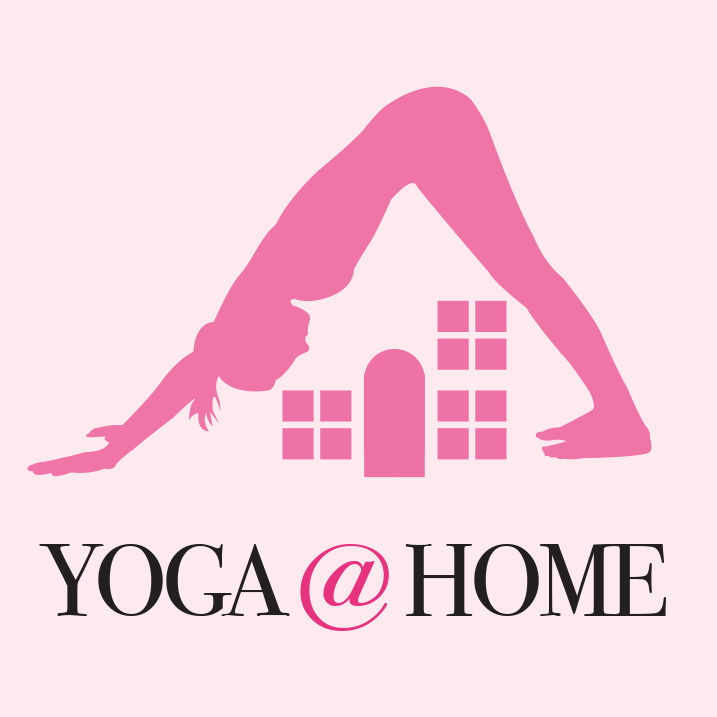
Flow to strength
Twists connect into the core as we flow to strength, with Moon Saker. Words: Laura Dodd
In this series we flow to strength with strong poses for full body strength, also working with some twists to connect into the core and obliques.
As well as strengthening the core, twisting postures aid spinal mobility, back health, good posture, healthy digestion and help to raise energy levels. When we twist our torso, the muscles in our core, shoulders and back simultaneously lengthen and contract on each side.
To twist and engage the obliques correctly, keep the hips square, inhale, lengthen the entirety of the spine
through to the crown of the head and keep the lower ribs knitting in. Exhale, to twist from the centre of you, contracting ribcage to opposite hip.
You will need a yoga block and always listen carefully to your body throughout this practice, to do what is right for you. Let’s get started!
Watch the mini session with Moon Saker on the OM website or app, brought to you in partnership with The Yoga Class. Visit theyogaclass.co for the full-length class, plus 220+ more on-demand classes.
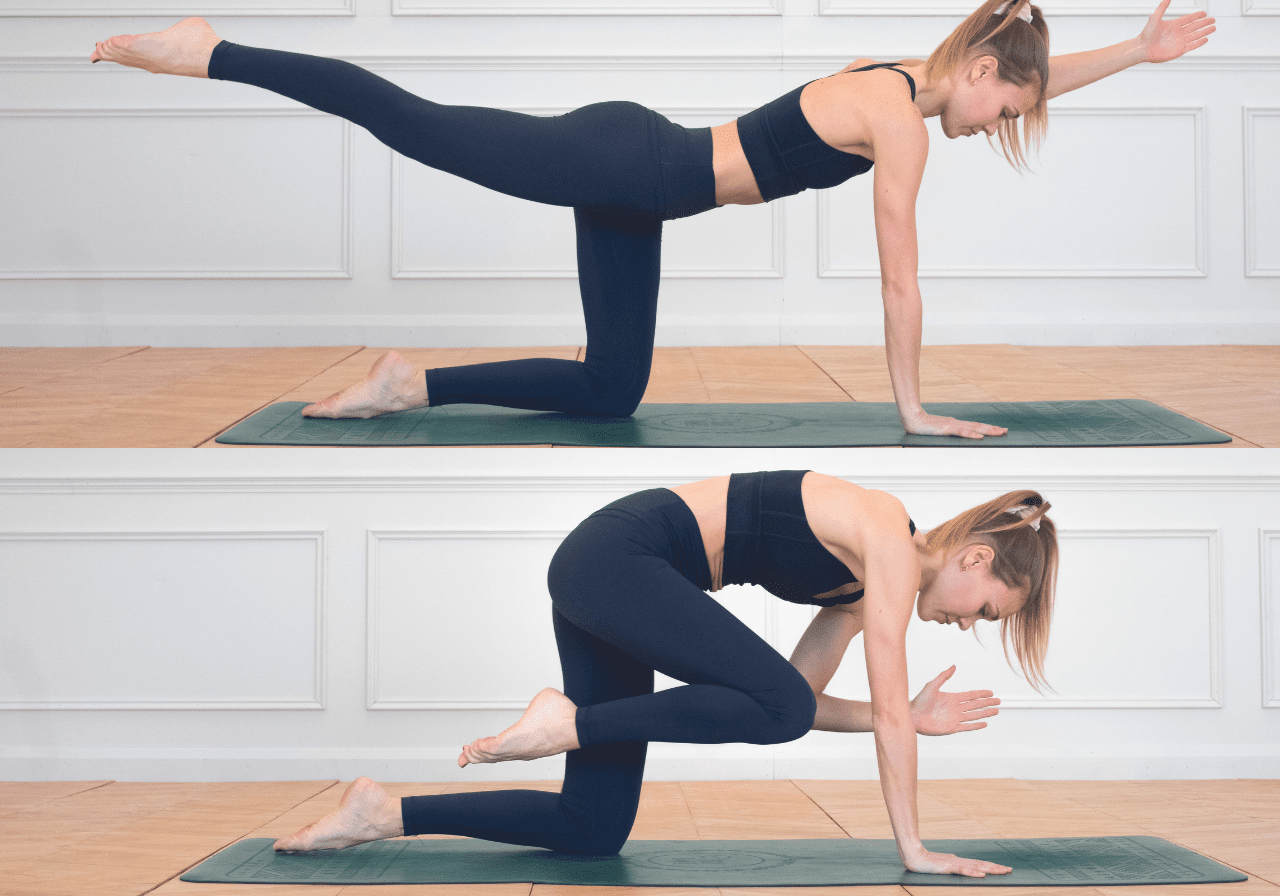
1. Dandayamana Bharmanasana to Dandayamana Bharmanasana (Knee to Elbow Pose: Balancing Table Pose to Balancing Table Knee to Elbow Pose)
From a kneeling position bring the hands to the mat, wrists under the shoulders, knees under the hips. Push firmly into all parts of the hands with the fingers evenly spread, as you protract the shoulder blades, hug in through the lower ribs and draw the belly button towards the spine. Inhale, reach the right hand forward and left leg back continuing to hug in through the core.
To enter Dandayamana Bharmanasana, knee to elbow pose, keep pressing firmly into the grounded hand and knee, keeping the core engaged and the shoulder over the wrist. On the exhale, draw the knee to the elbow and opposite rib to hip. Repeat for three sets, before repeating on the other side.
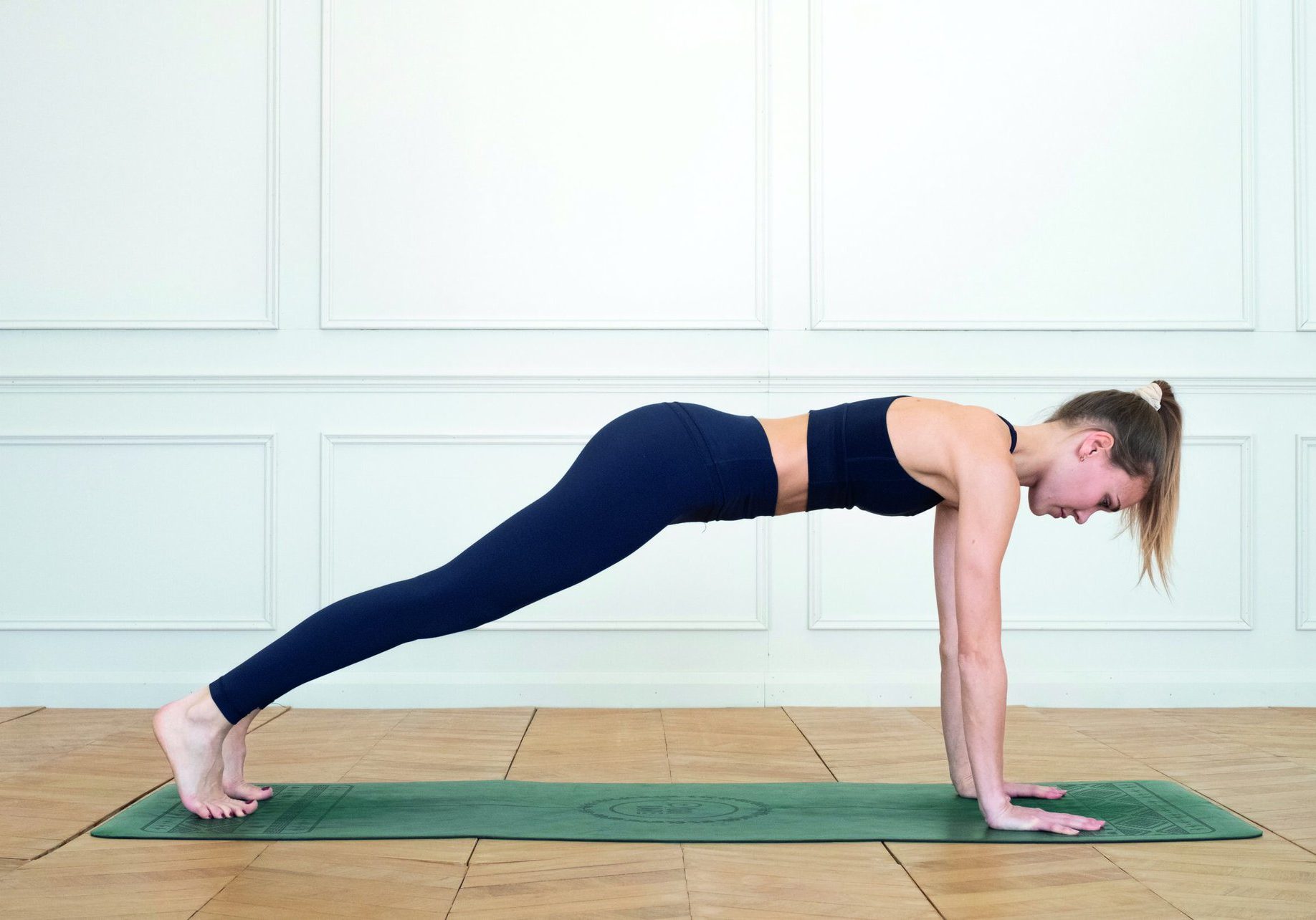
2. Phalakasana (Plank Pose)
From your tabletop, step the feet towards the back of the mat, keeping the shoulders directly over the wrists and the hips level with your shoulders. Push firmly into the hands, as you protract the shoulder blades and draw in through the core, keeping the glutes engaged. Hold for 5-10 deep breaths.
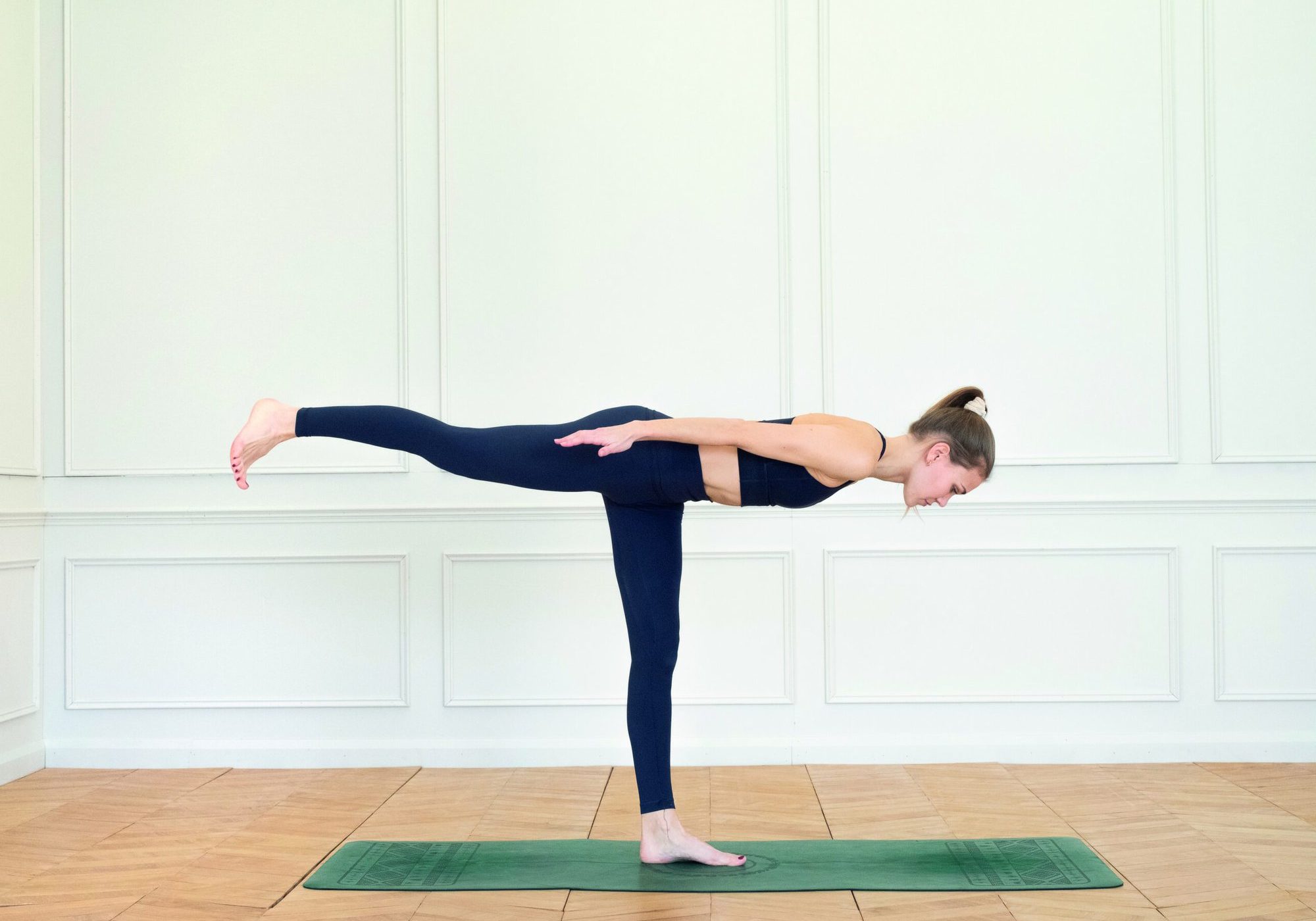
3. Virabhadrasana III (Warrior 3 Pose)
Come to High Lunge pose, right leg forward. Root down firmly with your right foot, as you draw up through the abdominals, hug the right hip into the midline and drop the left outer hip to the mat. Push back with the left heel, while extending the arms, sternum and crown of the head forward, keeping the arms alongside the ears and the palms facing towards each other. Inhale, tip the weight forward keeping the back leg engaged and the back foot flexed, as you draw the torso parallel with the mat. Keep the abdominals engaged and drawing in towards the spine. Hold for 5- 10 strong breaths, before repeating on the other side.
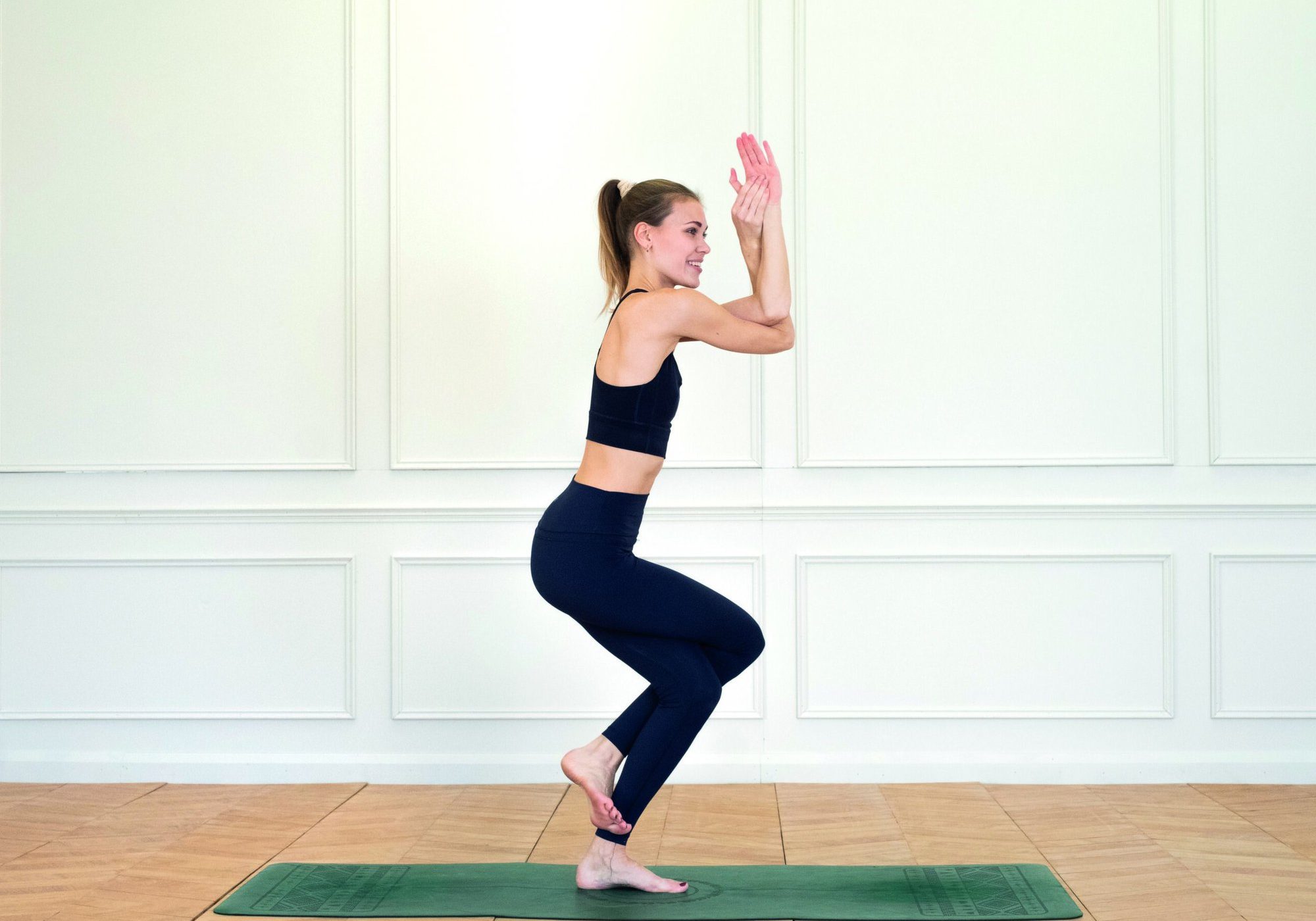
4. Garudasana to Garudasana Variation I (Eagle Pose to Eagle Variation I Pose)
Stand in Tadasana (Mountain pose), grounding firmly and evenly through the feet. Bending deeply into the knees, lift the right foot off the ground, slowly wrapping the right thigh over the left and hooking the right foot behind the left calf. Reach both arms out in front of the body, wrapping the left upper arm over the right, crossing the forearms and aiming to press the palms together. Draw the hands up and away from the face as you sink lower into the hips and draw in through the lower belly. Modify by grounding the right foot, rather than double wrapping around the calf.
To enter Garudasana I, exhale, draw the elbow to the knee, as you draw in through the abdominals. Inhale, to lift through the elbows and come back into Garudasana. Repeat for three sets before repeating on the other side.
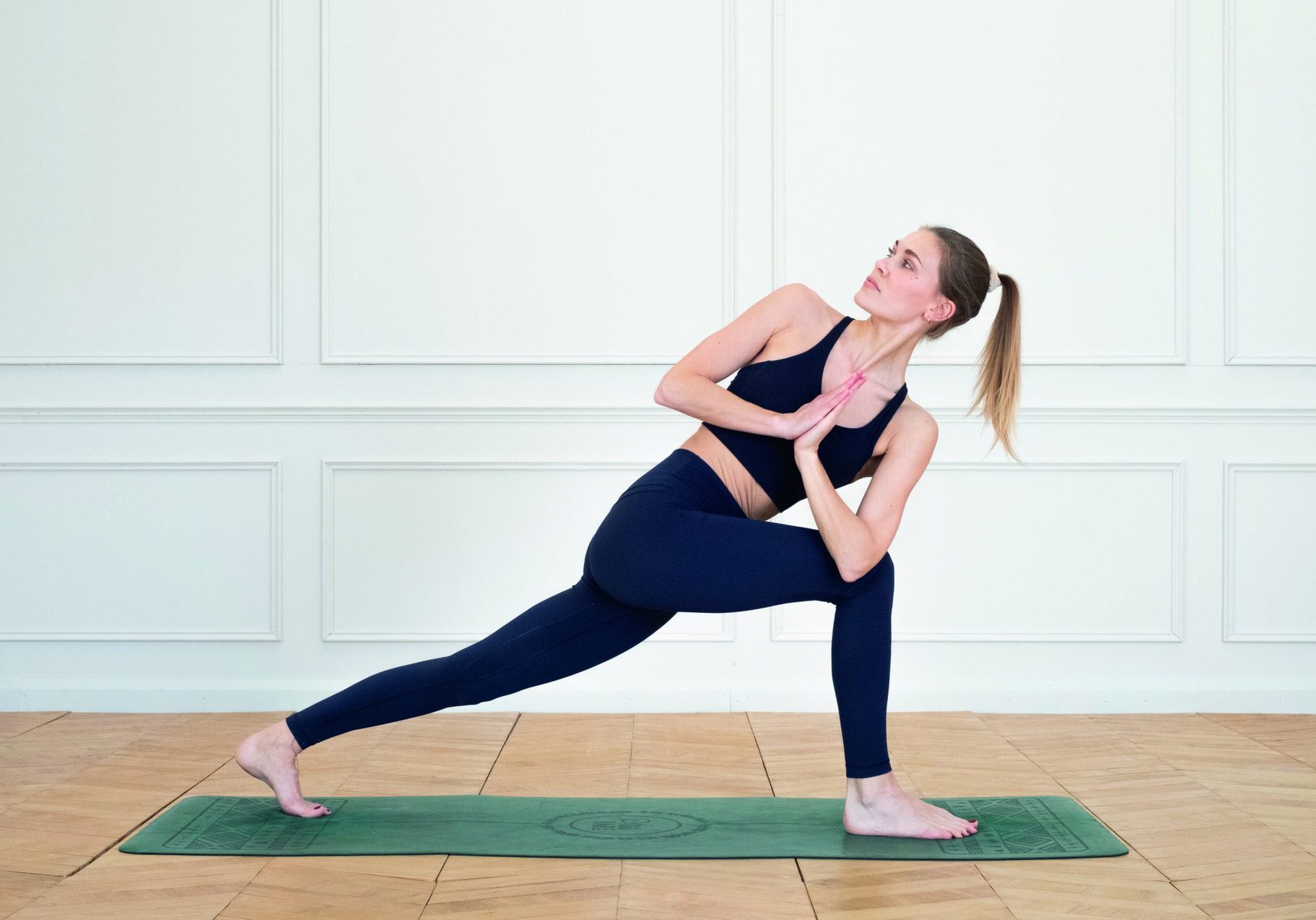
5. Parivrtta Parsvakonasana Variation (Revolved Side Angle Pose Variation)
Come to a high lunge position, right knee forward and the hands in Anjali Mudra. Keep the front knee tracking over front ankle and the front thigh parallel with the mat as the left glute engages to square the hips. Take an inhale here. On the exhale, hook left elbow over right thigh, twisting from the ribcage, drawing the left ribcage to right hip and hugging in through the abdominals. Push firmly into the right hand, as you draw the chest through to the right side of the mat, drawing right shoulder back and taking the gaze over the shoulder. Hold for five conscious breaths and then repeat on the other side.
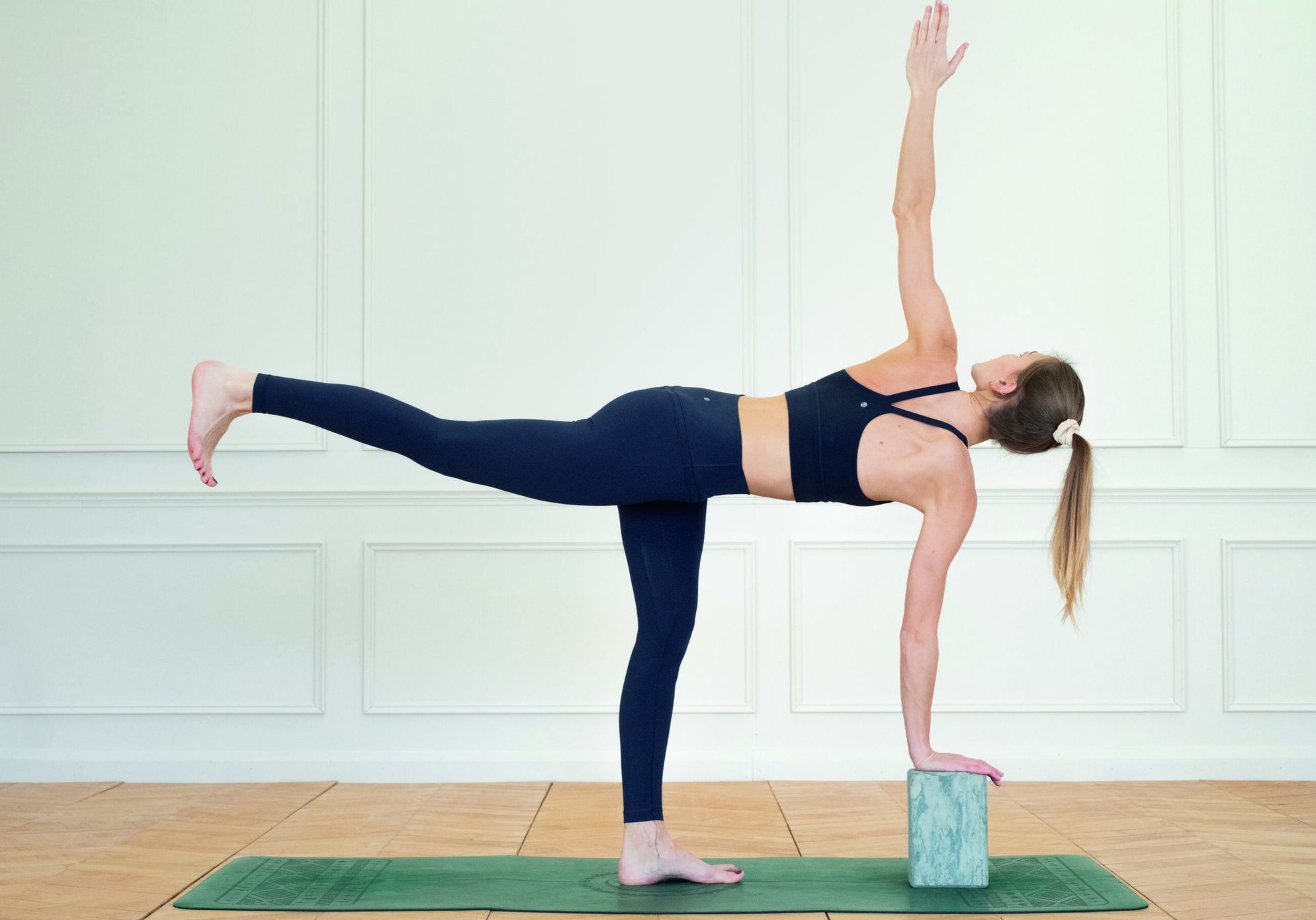
6. Parivrtta Arda Chandrasana (Revolved Half Moon Pose)
Standing at the top of the mat in Tadasana, start to bring the weight into the right foot. Begin to hinge at the hips, tipping the torso forward and bringing the left hand to the mat, as the left leg lifts. The left-hand fingertips rest at the top left-hand corner of the mat and underneath the shoulder. The torso and back leg should be parallel with the mat, back foot flexed and the torso twisting to the right. Keep lifting through the back leg, as the inner thigh lifts and the outer hip drops, to square the hips. Begin to take the right hand and gaze directly up to the sky, drawing in through the abdominals and hugging left rib to right hip. Modify by bringing a block under the left hand. Stay for five deep breaths before repeating on the other side.
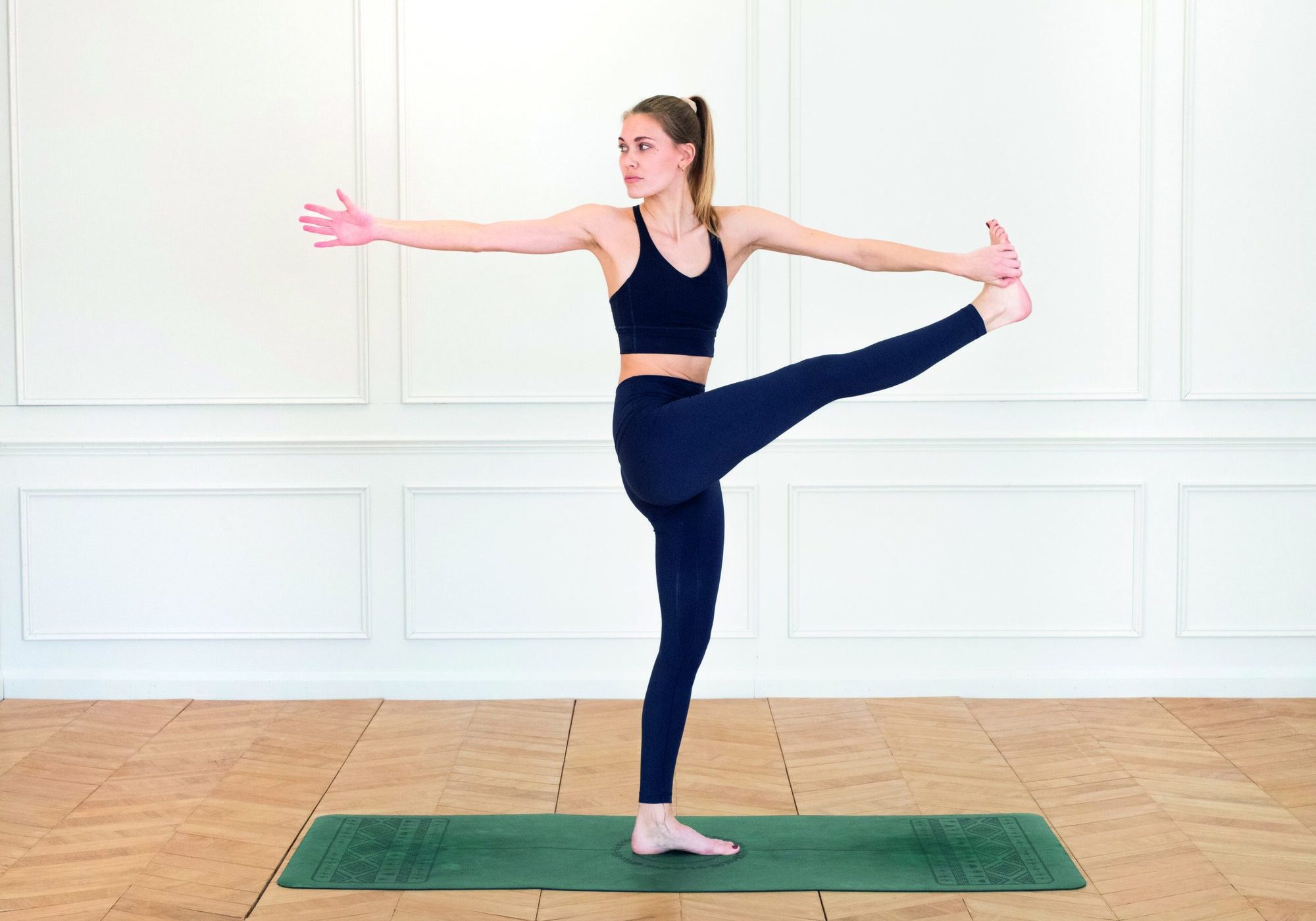
7. Parivrtta Hasta Pandangusthasana (Revolved Hand to Big Toe Pose)
Come to Tadasana at the top of the mat and start to bring the weight into the right foot. Planting firmly and evenly down through the right foot, lift the left knee into the chest. Wrap the right hand around the outside edge of the left foot, as you extend the left leg forward kicking through the heel. Keep the pelvis level by dropping the left hip down, as you draw tall through the crown of the head. Slowly start to take the gaze and left arm to the back of the mat. Keep the shoulders dropping away from the ears, the tailbone drawing down and right rib hugging towards left hip. Modify by bending the knee and taking the hand around the outer edge of the knee rather than the foot. Hold for five deep breaths, before repeating on the other side.
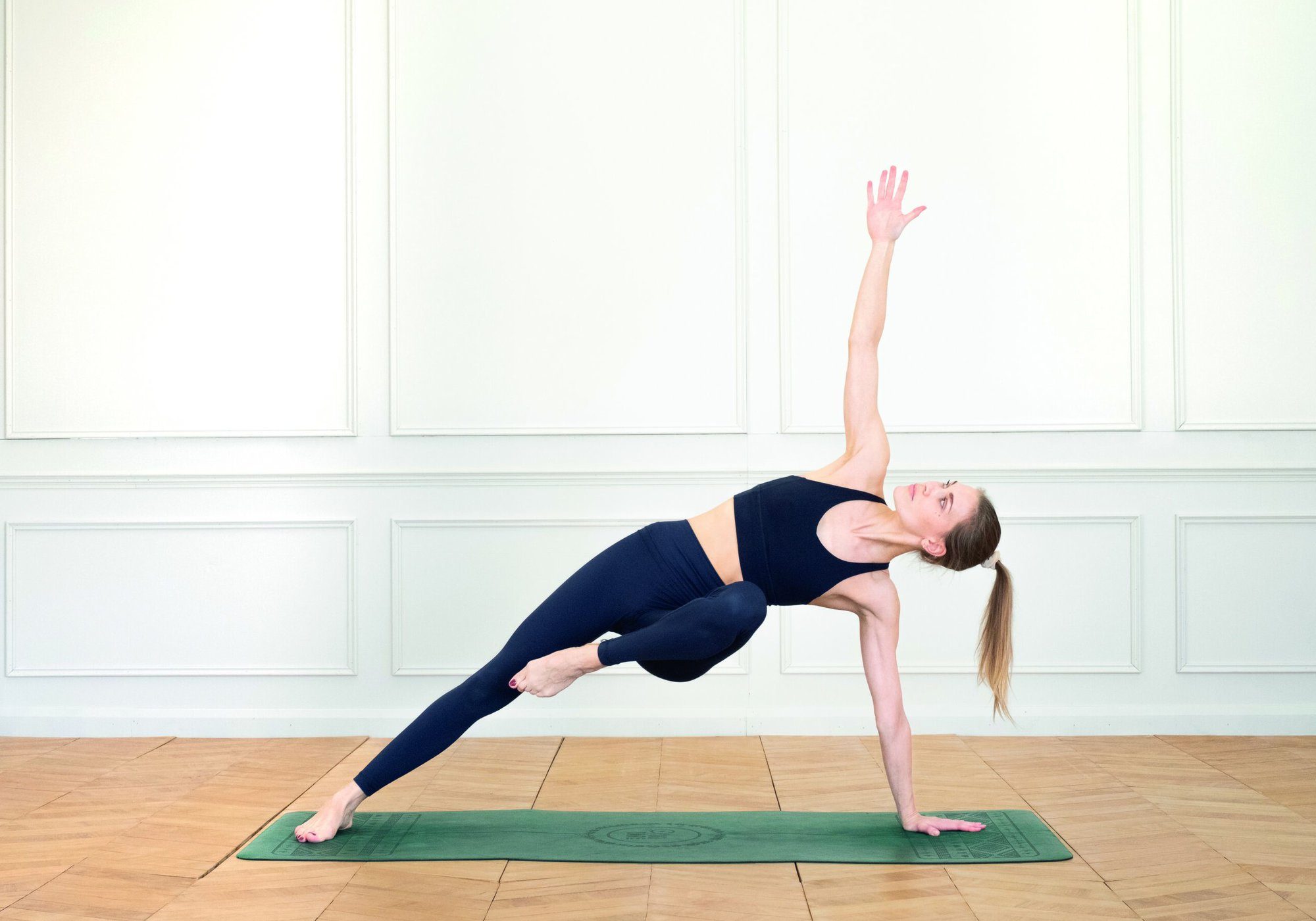
8. Vasisthasana variation (Side Plank with Bottom Knee Lifted Pose)
From plank position, bring the right hand to the centre of the mat, with the shoulder directly over the wrist. Rotate on to the outside edge of the right foot, bringing the left foot to stack on top of the right. Push firmly into the bottom hand, as the shoulder blade protracts, lifting the hips to create one line from shoulders to ankles. Draw the lower ribs in and the navel to spine, keeping the glutes and legs active. Lift the bottom knee in across the body to the opposite ribcage as the left foot sole wraps to the mat. Take the top arm and drishti up. To modify, drop the bottom knee. Hold for five strong breaths before repeating on the other side.





